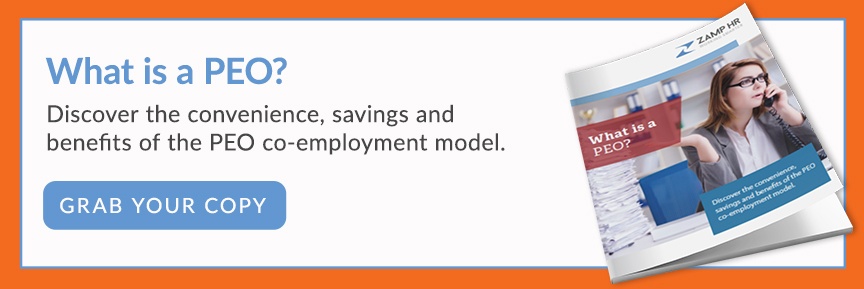Most companies only have acceptable workers' compensation insurance administration. They process claims when they show up in a reactive manner, dealing with accidents as they happen. Great workers’ comp administration, on the other hand, puts work in before any accidents occur.
This requires administration by specialists who understand how to optimize the program and can free up HR to focus on core priorities. However, many companies can’t afford a full-time workers’ comp specialist. Thankfully, there are things you can do, which range from getting the right workers’ compensation tracking software to set up a proper return-to-work program.
Here are eight ways you can streamline your workers’ comp administration and make everything run better.
Implement Integrated Tracking Software
You need great workers’ compensation tracking software. The best software is integrated into your other HR software, and thus connects to payroll and time and attendance. It has self-service portals so employees can report accidents directly. Managers can then access a reporting dashboard that allows them to track potential safety issues.
Be aware that you are looking for tracking software, not case management software (which is used entirely for claims management). The software also tracks premiums and other expenses.
Train Employees to Report Injuries Immediately
As there is a limited amount of time to file the claim, you need to get proper reports from your employees as soon as an accident happens. The employee is responsible for documenting the date, time, and circumstances. Claims can be rejected when employees don’t know to report immediately.
Educate Employees on Responsibilities
Make sure that your employees know that they have responsibilities when a work-related injury occurs. Primarily, they need to inform the medical provider that it is a work-related injury and forward the billing statement to the adjuster and also provide a copy to you.
In some cases, employees will ignore billing statements thinking that you will take care of them. This results in them being turned over to collections and potentially the claim being denied. Make sure that they know not to do this.
Provide all employees with the following information that they need to forward to their provider:
- Work Comp Carrier
- Date of injury
- Billing address
- Claim number
- Adjuster’s name
- Adjuster’s phone number
The employee needs to have this information handy themselves so they can direct bills appropriately and aren’t left with medical debt.
Audit Employee Classifications
Make sure your employees are characterized correctly. One of the factors that determine workers’ comp premiums is the job classifications of your employees. There are 500 to 600 classifications, so it can be quite challenging to get them right.
One issue is that construction is obviously a high-risk profession, and sometimes administrative staff who never go to a construction site end up being classified as much higher risk than they are.
Get Employees Immediate Care
Employees should seek medical care right away and not try to tough an injury out. In some cases, they may feel fine at the time of the accident, then have symptoms show up later. (Whiplash from auto accidents is notorious for showing up only after a few days).
Instead of sending employees home for the day, take them to urgent care or, if needed, the emergency room. While you can’t force employees to accept medical care, you can certainly make it as easy as possible for them and build a culture of seeking care immediately.
Inform With Data
Do you know what your safety issues really are? Reviewing all of your workers’ comp claims can help you find problems. Does one particular work site see a lot of slips, trips, and falls? You probably have trip hazards causing problems. Do you see a lot of traffic accidents?
You can use this data to improve your safety policies and training to help reduce future losses and keep your employees safe.
Prepare For Annual Audits
Your carrier will require a workers’ compensation audit every year. They will be looking for changes in your payroll, employee classifications, etc.
Use your tracking software to make sure that you have all the data they are going to ask for ready. This includes employee hours, duties, payroll classifications, and payroll. Make sure you distinguish between employees and independent contractors (and make sure you don’t misclassify an employee as an independent contractor, which can cause you a lot of problems later).
Develop a Return-to-Work Program
Just as with other insurance, the more your workers’ comp carrier has to pay you in claims, the higher the next year’s premiums. So, one way to control costs is to reduce the cost of each individual claim.
The most effective way to do so is to develop a return-to-work program. This allows injured employees to get back on the job later by assigning them appropriate temporary duties. In most cases, this means that employees can return to work before they have to start paying lost-time wages. They are also likely to recover more quickly. Return-to-work programs can also be helpful if an employee is unable to return to their previous position, but have valuable institutional knowledge you can’t afford to lose.
Optimize Workers’ Comp with HR Outsourcing
So, how can you best achieve all of these things? HR outsourcing can really help. They can provide the expertise you need without hiring a full-time employee, they should already have high-quality workers’ comp tracking software that you can use, and they have helped other clients with return-to-work programs. By turning workers’ comp management over to the specialists, you can get lower premiums by adopting their experience modifier and pay-as-you-go monthly premiums. These last savings are only possible when you work with a Professional Employer Organization.
Outsource to a PEO, and you will save time and money on workers’ compensation. That puts you in a better place to keep all of your employees safe.



